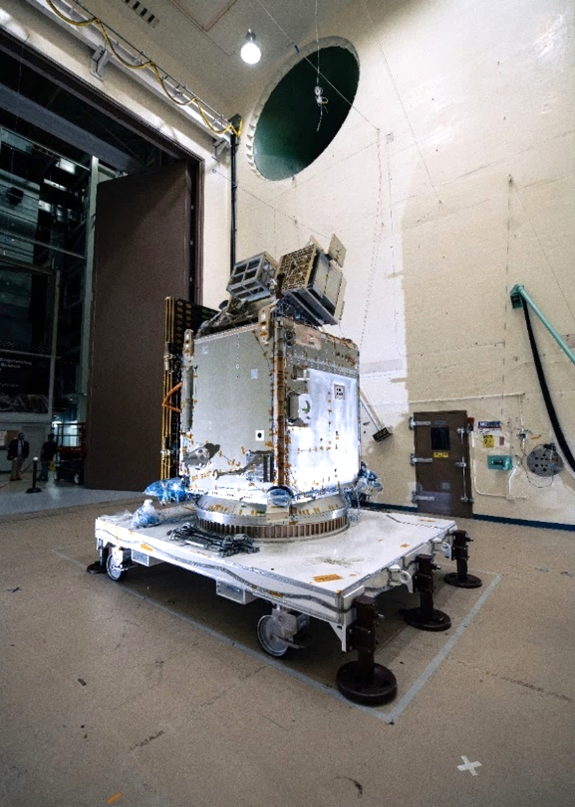Acoustic Test Facility

Preparing for the Roar of Launches
The Acoustic Test Facility at the Goddard Space Flight Center (GSFC) is designed to subject a wide range of scientific satellites, subsystems, and spaceflight components to the intense acoustic loads experienced during launch. The facility includes a reverberant chamber, acoustic horns, noise generators, a control console, and a data acquisition system.
The reverberant chamber, which provides a uniform simulated acoustic environment, has internal dimensions of 33 feet in length, 27 feet in width, and 42 feet in height. Payloads are introduced through a 15-foot wide by 30-foot high access door and are either suspended from a crane or mounted on a specialized fixture in the center of the chamber.
When required, the chamber can be converted into a Class 100,000 cleanroom after the payload access doors are closed and the facility is cleaned. A forced ventilation system helps stabilize chamber pressure during test operations and purges the chamber with gaseous nitrogen (GN2) to ensure safe entry after the test.
Engineers use a closed-loop controller to regulate the flow of GN2 through noise generators attached to each of the two horns, generating the necessary level of acoustic energy. The facility can produce a maximum overall sound pressure level (OASPL) of 150 dB. Acoustic tests typically last between 60 and 120 seconds.
These tests ensure that spacecraft can withstand the acoustic environment of launch and provide accelerometer data for validating and refining structural analysis models. The Acoustic Test Facility has been used to test flight hardware for GSFC in-house projects, other NASA missions, and private industry.
The Acoustic Facility is managed by ETD’s Mechanical Systems Division (MSD). Contact MSD for more information.
